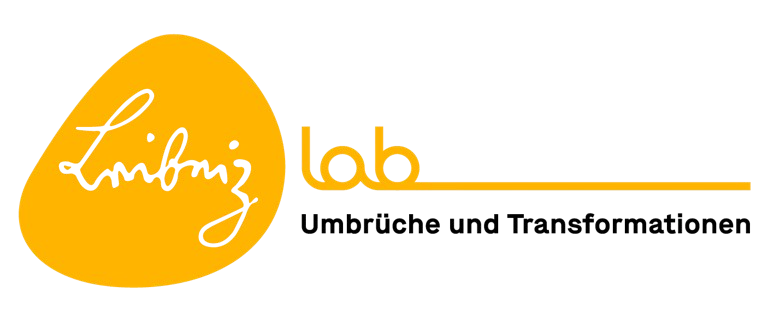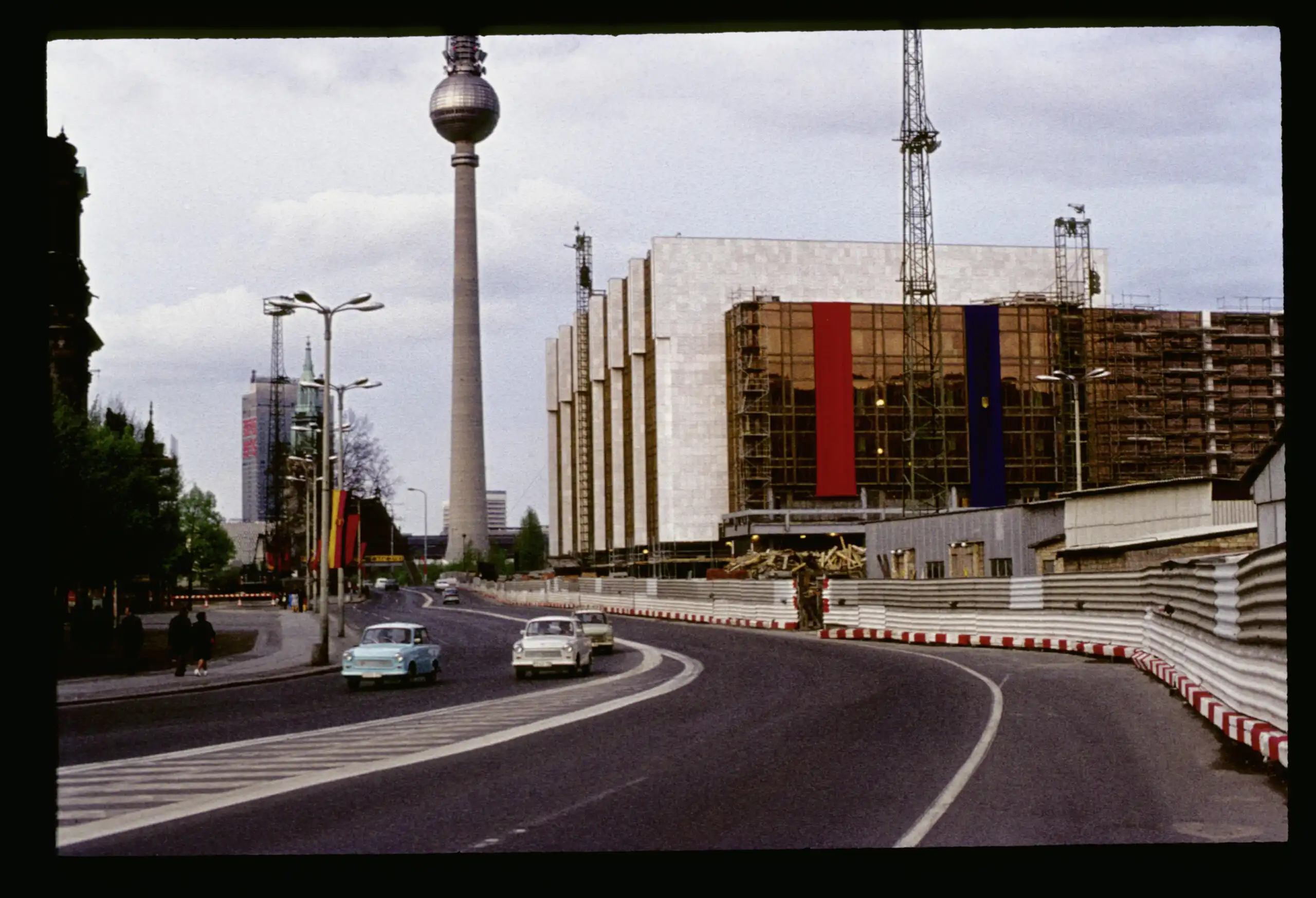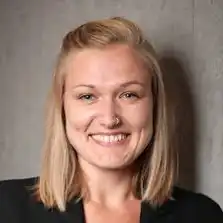German reunification significantly changed the cityscape of Berlin-Mitte. Central buildings such as the Palace of the Republic and the Maple Leaf, which shaped the everyday life and self-image of the GDR population, were demolished. The population has also changed to some extent. The people who live and lived in the neighborhoods were witnesses to socio-political, economic, cultural, and urban upheavals. How did they experience the transformations since 1989/90? How have the neighborhoods around the city library changed? Who lives on Fischerinsel and in the Nikolaiviertel?
To find answers to these questions, the Leibniz Lab organized a Moving Lab in Berlin-Mitte in collaboration with the Berlin Central and Regional Library (ZLB). With this event, we wanted to create a platform where the personal experiences of the local population and our scientific expertise could come together.
The Moving Lab focused on Fischerinsel and Nikolaiviertel, two special neighborhoods in what was then East Berlin. The approximately 40 participants were able to explore the two neighborhoods and the former State Council building on three tours and discover new aspects of these three significant locations. In a small photo exhibition and several storytelling cafés, participants were able to reminisce, exchange experiences, and discuss the changes in Berlin’s cityscape. The event ended with a panel discussion and the question of how much of East Berlin still remains in Berlin-Mitte today.

Berliner Fischerinsel: an underestimated place
Fischerinsel is a very old district that was characterized by narrow streets and medieval charm until World War II. The old buildings survived the war, but were demolished between 1967 and 1971. Instead, the former East German government had six 21-story residential high-rises built, which still stand today. In the 1970s, the striking new buildings on Fischerinsel were inhabited not only by large families, but also by artists, scientists, officials, and diplomats.
During the tour, Fischerinsel was described by many as an underrated place: often perceived as barren and unwelcoming from the outside, it proved to be surprisingly lively and neighborly during the tour. The Kreativhaus was particularly highlighted as a cultural and social anchor point. It became clear that many of today’s residents appreciate the good community spirit – even if historical traces are hardly visible. There was criticism that there are hardly any references to the eventful history of the place.
The experiences of the people who lived and live on Fischerinsel focused on their residential history. Several residents reported on growing up in the high-rise building, on social interaction, and on the pain of seeing places that shaped their identity, such as the maple leaf, being demolished. The change in the resident population also became clear, which, in addition to long-time residents, is also characterized by newcomers and international life stories. One participant, who has lived there for a few years, described his positive experience with the creative house and emphasized the importance of neighborhood networks for settling in Berlin.
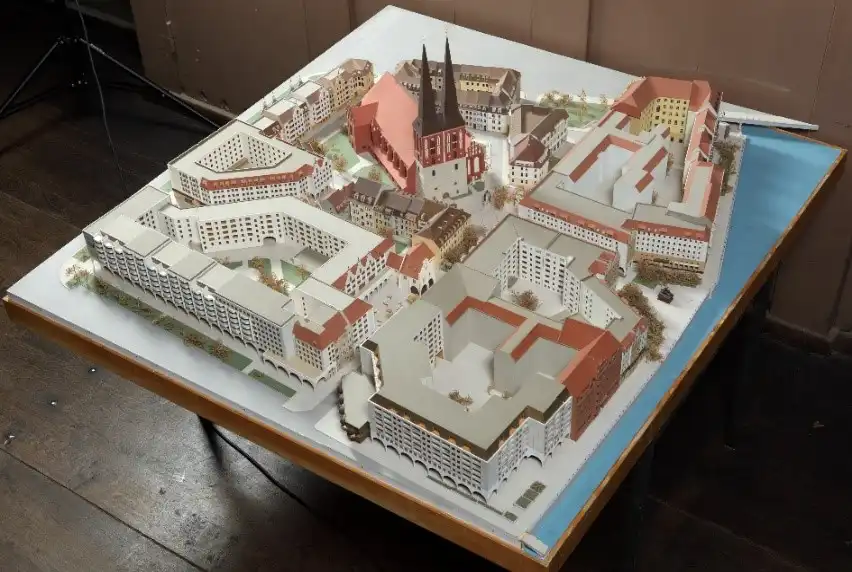
Nikolaiviertel: More than a tourist hotspot
The history of the Nikolaiviertel district is just as old as that of Fischerinsel, but its historic buildings were almost completely destroyed in 1944. Nevertheless, the Nikolaiviertel still has a medieval charm today. This is because the GDR government decided to reconstruct the Nikolaiviertel in the run-up to Berlin’s 750th anniversary celebrations from 1981 to 1987. The majority of the buildings that were created in this way were not rebuilt true to the original, but consist of new prefabricated buildings with historical façades.
The tour of the Nikolaiviertel focused primarily on its long urban history from the Middle Ages to the GDR reconstruction in the 1980s. In this context, the participants discussed how a city could be designed in a people-friendly way – as envisaged, for example, by the European city – instead of purely profit-oriented planning. The Nikolaiviertel is often ridiculed as a tourist attraction – but many of those present said they felt the neighbourhood was a real home. In this sense, many participants criticised how little the local population is involved in Berlin’s urban planning.
The nearby ZLB was also recognised as a place of encounter and active neighbourhood life. In the summer of 2024, the current Berlin Senator for Culture, Joe Chialo (CDU), proposed merging the ZLB and its second location in Berlin-Kreuzberg into the former Galerie Lafayette department store on Friedrichstraße. Where luxury goods were sold until July 2024, Berliners will be able to borrow books, magazines and DVDs in the future.
However, the idea has met with disapproval from local residents. Some participants criticised, among other things, the possible loss of buildings that contribute to the city’s identity, such as the ZLB and the Amerika-Gedenkbibliothek, which the USA donated to West Berlin after the Second World War. Those present complained that although the city of Berlin is developing, it is forgetting its own history.
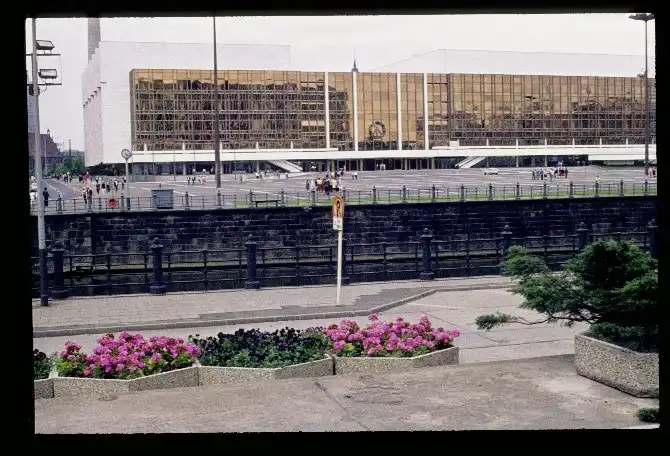
Staatsratsgebäude: Former center of the GDR regime
The State Council building, now home to an international management school, was experienced as a place of contradictions: formerly the seat of the highest GDR committee, today a symbol of globalisation and exclusivity. The discussion on site quickly developed into a lively debate about the GDR petition system, personal experiences with political participation in the GDR – and the question of how co-determination is experienced today.
The topic of GDR history dominated the narrative café at the State Council building. Many expressed regret about the demolition of central buildings such as the Palace of the Republic. They said it had been part of a collective memory and identity far beyond its architectural significance. A frequently expressed criticism was that the decisions had been made without genuine citizen participation – a pattern that, in the view of many, continues to this day. Questions about Berlin’s identity and how to better deal with the past also ran through the discussions.
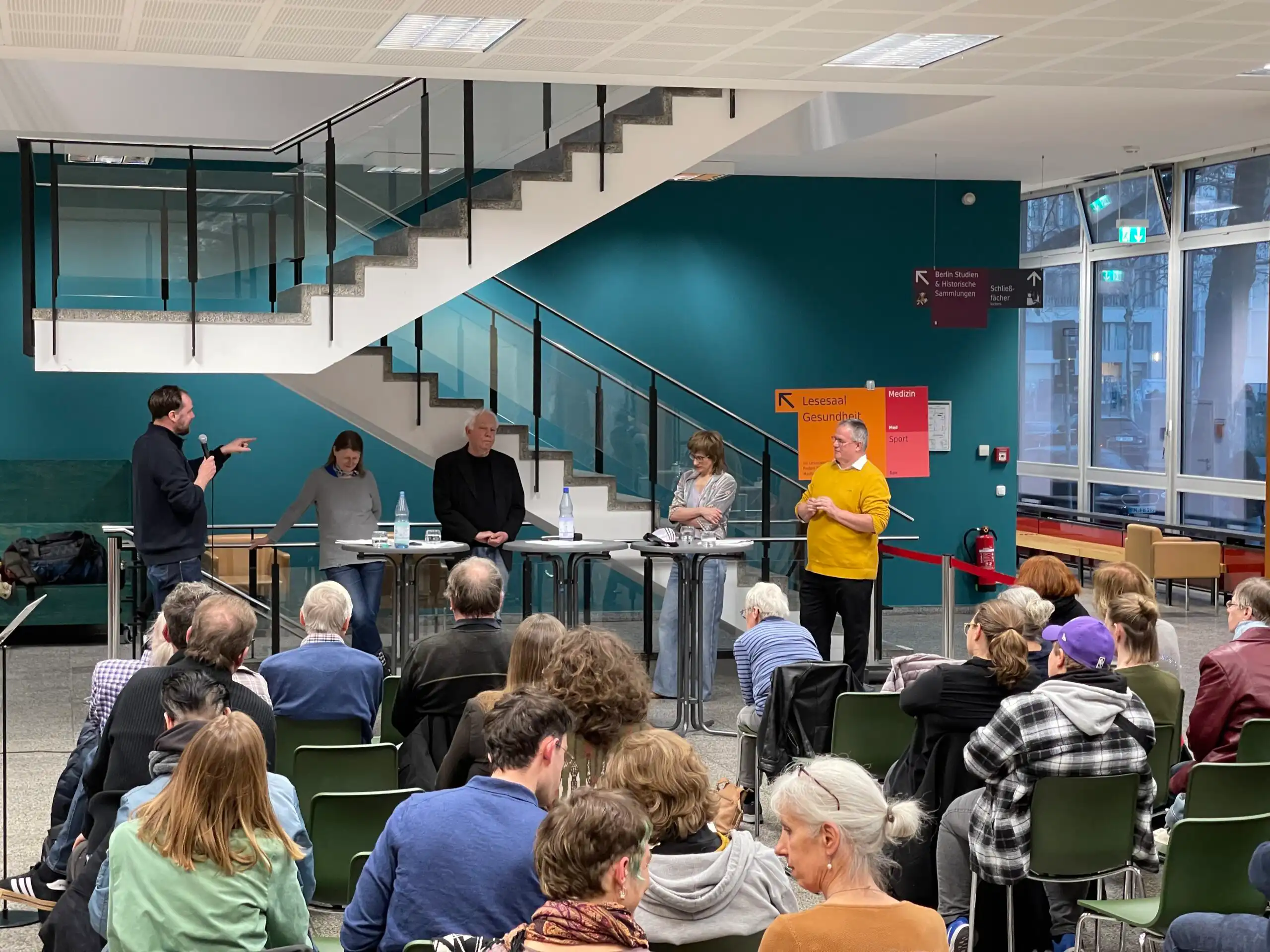
Courage for socialist architecture
As a metropolis, Berlin is constantly changing: socially, culturally, economically and in terms of urban development. Above all, the former division and the upheavals and changes that accompanied the Peaceful Revolution and German reunification left countless traces and continue to shape the city to this day. These aspects became clear in the final discussion: Harald Engler advocated a differentiated view of the demolition decisions of the 1990s – they were made partly out of the spirit of the times and partly out of political agenda. Engler has been researching the history of construction and planning in the GDR at the Leibniz Institute for Spatial Social Research for years.
Judith Prokasky from the Humboldt Forum and Ines Hahn from the Berlin City Museum advocated a more open approach to GDR architecture and everyday history. Dimitri Hegemann, a member of the Club Commission Berlin, recalled the cultural potential that often lies in supposedly ‘useless’ places. In 1991, Hegemann founded the famous techno club Tresor on Leipziger Strasse, which ran along the Berlin Wall. Both before the fall of the Wall and in the 1990s, the former border area was a largely unused space that offered many possibilities.
_
The Moving Lab took place on 9 April 2025 at the Berlin Central and Regional Library and was a collaboration between the ZLB and the Leibniz Lab for Social Disruptions and Transformations.
Über diesen Artikel
Lesen Sie auch

How the withdrawal of military troops continues to shape a place
It looks like an enchanted place today – the former base of the Soviet army on the Oder Island in Küstrin-Kietz. The village is located in Brandenburg, directly on the Oder and the Polish border. More than almost any other place, it has been shaped by the Cold War, decades of military presence and the […]
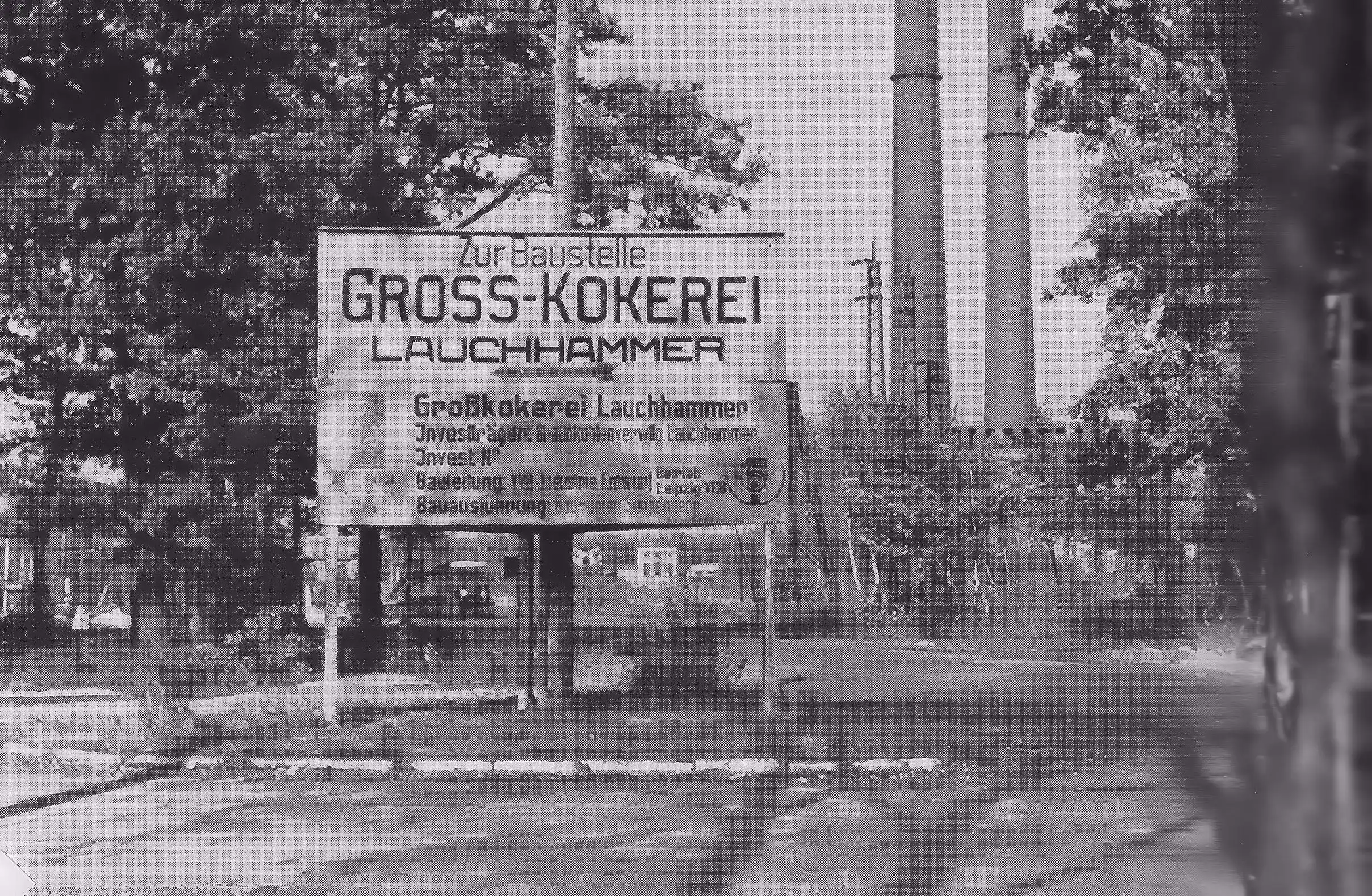
Seeking a new narrative – How a small town is reinventing itself
The name Lauchhammer has little to do with the vegetable that adds flavour to stews and soups. Lauch means ‘moor’ in Lower Sorbian and refers to the landscape in southern Brandenburg where the small town is located. The word “hammer” in the town’s name alludes to its industrial tradition. Iron ore has been mined and […]
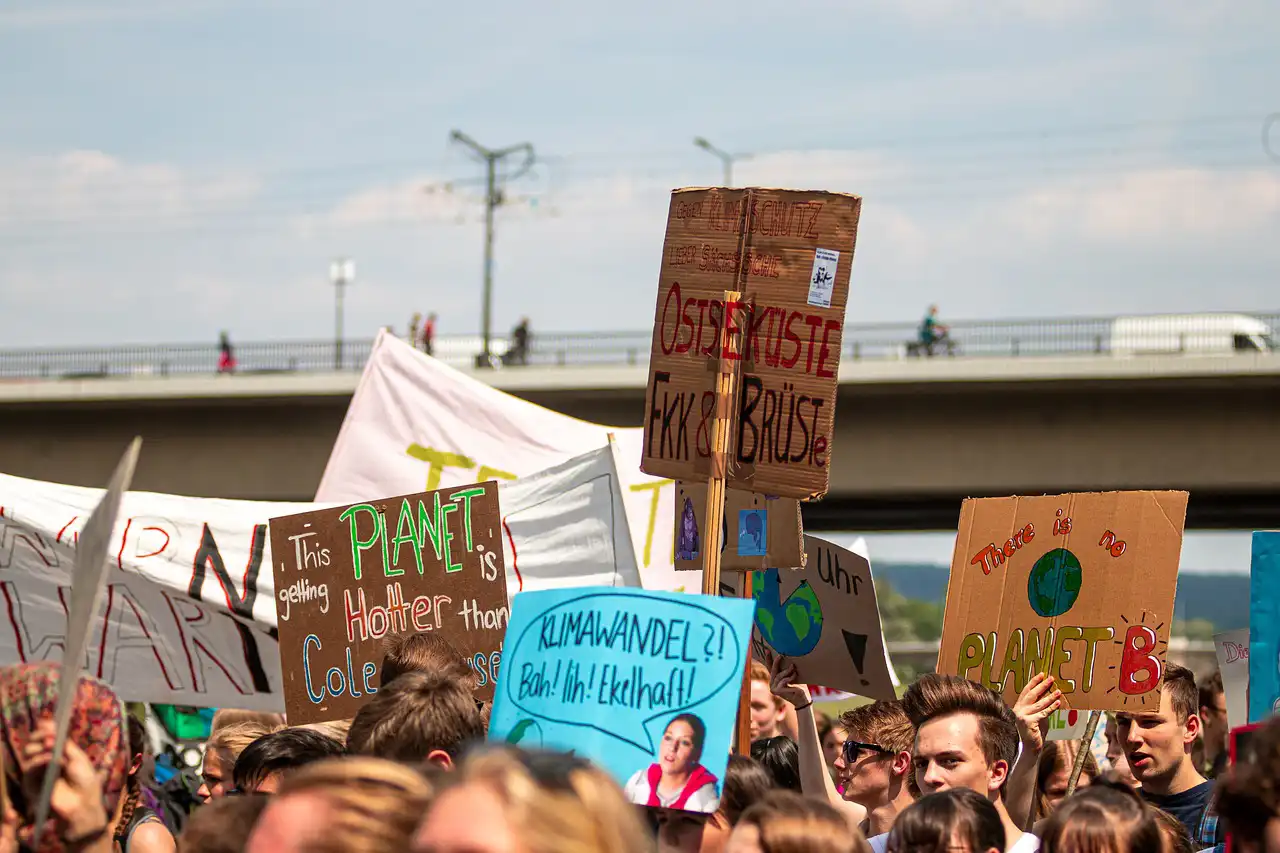
Social-ecological transformation: Stuck between enthusiasm, resistance and unusual alliances
Between optimism and resistance: the socio-ecological transformation is dividing society. While some are calling for radical change, others want to prevent any environmental protection measures. Unusual alliances could help the transformation succeed.
